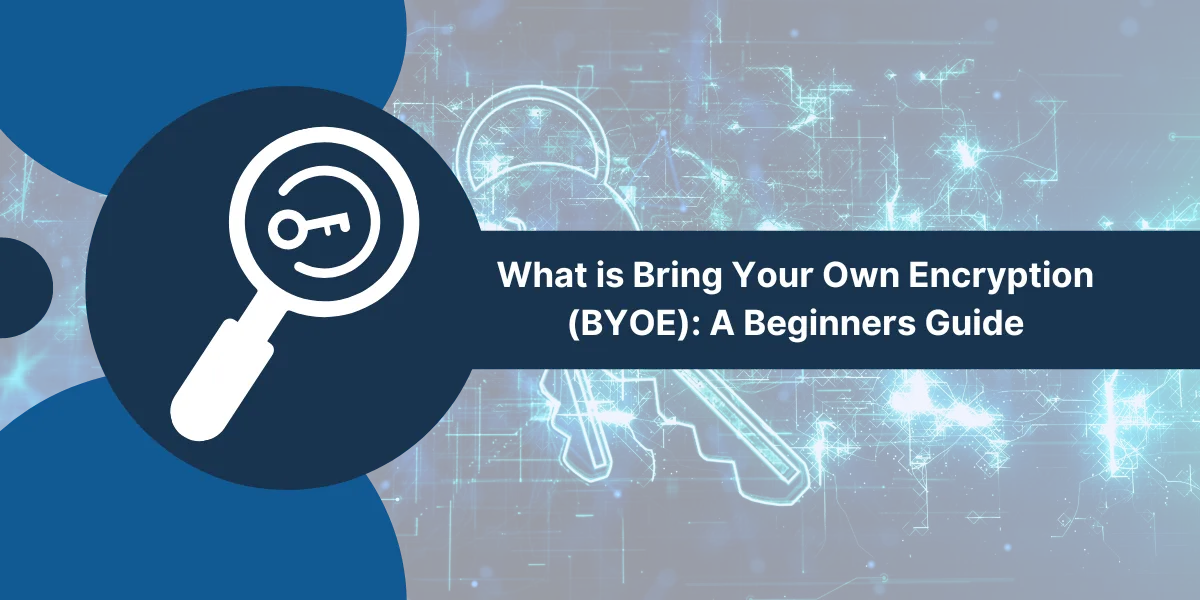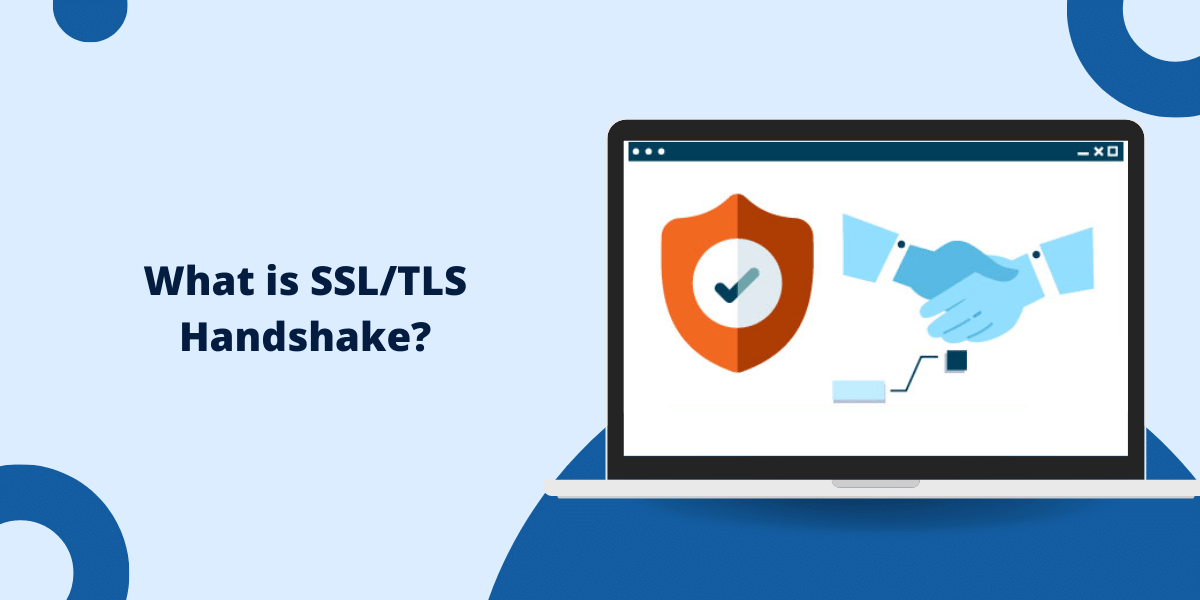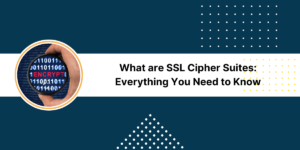Bring Your Own Encryption (BYOE) Introduction
Data security is a major concern for organizations using cloud services. Though cloud providers encrypt customer data, they manage the encryption keys, which gives them potential access to decrypted customer data.
To improve cloud data privacy and compliance, Bring Your Own Encryption (BYOE) gives customers exclusive control over encryption keys. Also called hold your own key (HYOK), BYOE is a cloud security model where users generate, manage, and store the keys that encrypt their data.
With BYOE, cloud providers cannot decrypt customer data without the customer-managed keys. This isolates data from the provider and other tenants while meeting strict data residency and regulatory compliance demands.
BYOE is gaining interest as organizations want greater cloud data sovereignty and control. High-profile breaches and expanded regulations also raise concerns over provider access to cloud data. This article provides an overview of BYOE, its benefits and use cases, how it works, and best practices for implementation.
Key Takeaways
- Bring Your Own Encryption (BYOE) refers to a security model where users manage the encryption keys for their data in the cloud.
- With BYOE, organizations do not have access to customer data or encryption keys. The keys are owned and managed by the customer.
- BYOE improves cloud security and compliance by giving customers exclusive control over their data encryption.
- The main benefits include enhanced data privacy, improved regulatory compliance, and increased customer trust.
- BYOE works by integrating customer-managed encryption keys with a cloud provider’s native encryption capabilities.
- Implementation requires changes to account management, key storage, and access controls to support customer key usage.
- BYOE is gaining adoption due to the demand for cloud data sovereignty and concerns over provider access to data.
How Does BYOE Work?
BYOE integrates customer-generated encryption keys with a cloud provider’s native encryption capabilities. With this approach, the customer retains sole possession of the keys that unlock access to their data.
Separation of Duties
BYOE separates duties between the customer and provider:
- Customer: Generates, manages, and stores encryption keys in their systems. Uses keys to encrypt data before sending it to the cloud.
- Cloud Provider: Encrypts customer data at rest and in transit using provider-managed keys. Decrypts customer data for authorized users with the customer’s keys.
This division of duties ensures the cloud provider can only access the customer’s data if the customer provides the necessary decryption keys.
Encryption Key Usage
With BYOE, encryption keys are used as follows when a user wants to access data:
- The user authenticates to the cloud provider and requests data.
- Cloud provider verifies the user’s identity and authorization.
- The customer receives the user’s request and decryption key demand from the cloud provider.
- The customer approves the request and sends the customer-managed key to the provider.
- Cloud provider uses the customer’s key to decrypt requested data.
- Decrypted data is sent to the authorized user.
Key Management
To implement BYOE, the cloud provider must integrate with an external key management system controlled by the customer. This enables customer-managed keys to be used for encryption processes running in the cloud provider environment.
Cloud providers support BYOE through:
- Key storage integrations: Customers can store encryption keys in external key management systems, including on-premises HSMs (hardware security modules), dedicated cloud HSMs, and KMS (key management service) tools.
- Access controls: Give customers granular control over which users, workloads, and applications can request decryption with customer keys.
- Audit logs: Provide visibility into all encryption key usage and data access.
Why Implement BYOE?
Here are some of the main benefits that are driving the adoption of BYOE:
Enhanced Data Privacy and Sovereignty
BYOE gives customers exclusive control over their data in the cloud. The cloud provider cannot access, use, or share customer data without the encryption keys, which prevents the unauthorized exposure of sensitive data.
Improved Regulatory Compliance
BYOE can help meet data privacy regulations that restrict vendor access to sensitive data. This includes rules like HIPAA for healthcare data and PCI DSS for payment card data. BYOE may also facilitate compliance with data residency and sovereignty laws in different countries.
Increased Trust in the Cloud
BYOE assures that a cloud provider cannot mishandle customer data, whether inadvertently or deliberately. This protects against insider threats at the provider and builds greater trust in the cloud.
Prevent Vendor Lock-in
By owning the encryption keys, customers can more easily switch cloud providers or use multi-cloud solutions. The vendor does not control the keys that lock in access to data.
Standardization Across Environments
Organizations can implement BYOE across on-premises, cloud, and hybrid environments for consistency. The same key management and encryption policies apply regardless of where data resides.
BYOE Use Cases
BYOE is applicable for organizations subject to stringent data security regulations or that handle sensitive customer data.
Here are some examples:
- Healthcare providers use BYOE to assert data sovereignty over protected health information (PHI) stored in the cloud, which helps them meet HIPAA encryption requirements.
- Financial services firms implement BYOE to isolate financial transaction data from cloud providers. This supports compliance with regulations like PCI DSS, GLBA, and SOX.
- Retailers adopt BYOE to retain exclusive control over customer personal and payment data, improving trust and preventing unauthorized use.
- Government agencies use BYOE for data sovereignty when storing sensitive citizen data in the cloud. BYOE helps meet recommended NIST encryption guidelines.
- Multi-national companies employ BYOE so they maintain ownership of encryption keys when moving data across borders and cloud regions. This facilitates cross-border data transfers.
BYOE Implementation Best Practices
Here are some best practices to successfully implement BYOE:
- Evaluate which cloud provider services and features have BYOE support to meet your usage needs.
- Assess internal teams’ ability to take on encryption key management responsibilities using existing or new tools.
- Establish policies and procedures for key generation, storage, rotation, deletion, auditing, and access control.
- Develop clear plans for disaster recovery and business continuity when using external key management.
- Start with a small proof of concept to validate the BYOE model before expanding to additional workloads.
- Evaluate different customer-managed key storage integrations offered by providers to determine the best fit.
- Require employees to use multi-factor authentication when accessing keys to enhance security.
- Carefully design identity and access mechanisms to protect and properly broker keys for each request.
- Use hardware security modules (HSMs) where possible to generate and store encryption keys.
- Continuously monitor and audit usage of customer-managed keys via provider logs.
- Update key management servers, HSMs, and clients regularly to benefit from security patches.
- Create detailed documentation for operating procedures related to key management.
Comparison of BYOE vs Single-Tenant Solutions
In addition to BYOE, organizations can also achieve cloud data isolation using single-tenant solutions offered by some providers. These include:
- Single-tenant compute Dedicated physical servers for a single customer.
- Single-tenant storage: Logically isolated storage where data is not co-located with other customers.
- Hosted private cloud: A fully private cloud environment hosted on provider infrastructure.
BYOE provides deeper data control and security than single-tenancy. With BYOE, the customer retains the keys that control access to data. However, with single-tenancy, the provider still manages encryption and controls access.
However, single-tenant solutions may provide better performance, control, and customization since resources are fully dedicated to one customer. BYOE relies on shared infrastructure and multi-tenancy at the resource level.
Organizations choose between BYOE and single-tenancy based on their priorities for data security, performance, and control. Often, hybrid models are used. BYOE secures critical data, while single-tenancy hosts core systems that demand high performance.
BYOE Support in Different Cloud Providers
BYOE capabilities vary across the major cloud platforms:
AWS
- Key Management Service (KMS): Lets users generate and manage encryption keys in AWS. Integrates with other services.
- CloudHSM: AWS provisioned HSMs for customer keys. AWS has no access.
- Third-party key integrations: Connect external keys from partners like Thales, Fornetix, and Equinix via AWS Marketplace.
Microsoft Azure
- Key Vault: Azure-based encryption key generation and management service.
- Azure Dedicated HSM: FIPS 140-2 Level 3 validated HSMs hosted in Azure.
- Third-party integrations: BYOK support using customer keys from Thales, Fornetix, Equinix, and AWS CloudHSM.
Google Cloud
- Cloud KMS: Google’s cloud-hosted key management service.
- Cloud External Key Manager: Integrates keys from external HSMs and KMS tools via service APIs.
- Third-party integrations: Partners include Thales, Equinix, Fortanix, and Futurex.
IBM Cloud
- Key Protect: IBM’s key management system to generate, store, and manage keys.
- Hybrid Key Management: Integrate on-premises keys into IBM Cloud using AWS CloudHSM devices.
- HSMS: FIPS 140-2 Level 3 HSM devices hosted on IBM Cloud.
Leading SaaS applications like Salesforce, Box, and SAP also offer some level of BYOE support.
BYOE Encryption Models
There are two main encryption models used with BYOE:
Client-side encryption: The customer encrypts data before it leaves their environment and transmits cipher text to the cloud provider. This provides the deepest isolation but may impact functionality.
Server-side encryption: Data is encrypted upon arrival at the cloud provider. BYOE keys are used, but encryption is performed in the provider environment. Gives more application flexibility.
Providers allow one or both models based on service capabilities and architecture. Server-side encryption is typical for database services, while client-side encryption is more common for file storage.
Hybrid encryption, in which data is encrypted before and during transmission, also occurs. This provides defense in depth by having multiple layers of encryption with different keys.
Implementation Challenges
Adopting BYOE brings certain technology and process challenges:
- Requires new key management infrastructure with proper security controls and high availability.
- Increased operational overhead to securely generate, store, rotate, and manage encryption keys.
- Potential performance impact from encryption overhead, especially with client-side encryption.
- Careful integration work is needed to broker BYOE keys for each cloud service used.
- Complexity in syncing data across regions when keys are fragmented.
- Difficulty encrypting or decrypting data for analytics or applications.
- The learning curve in developing new internal skills to manage encryption keys.
- Planning for persistence of keys to prevent data loss if keys are deleted.
- Troubleshooting authorization issues or service errors related to key usage.
Organizations should work closely with their cloud provider and können vendors to navigate these challenges during implementation.
The Future of BYOE
BYOE adoption is accelerating as organizations push for greater cloud data security and sovereignty. It serves as a gateway for companies evolving to multi-cloud and hybrid cloud models.
Here are some likely BYOE trends:
- Broader implementation beyond initial use cases like regulated data and databases.
- Tighter integration between cloud provider identity systems and BYOE key management.
- Support for BYOE across more SaaS applications beyond IaaS and PaaS.
- Streamlining of operational processes for encryption key management.
- Automation of complex key handling tasks using machine learning and algorithms.
- Use of BYOE best practices as differentiation by providers.
- Integration of emerging encryption methods like homomorphic and zero-knowledge encryption.
- Expanded algorithms and key lengths are supported for stronger protection of keys.
As threats grow and data privacy laws expand, BYOE is expected to become a baseline cloud security practice for organizations across sectors.
Final Thoughts
Bring Your Encryption enables true data sovereignty and privacy in the cloud. By managing encryption keys, customers prevent unauthorized access to their data, improving compliance, trust, and portability for cloud deployments.
While advancing quickly, BYOE still carries operational and technical challenges. CIOs must evaluate providers, integrations, and internal capabilities before implementation. With proper planning and execution, BYOE provides the assurances organizations demand as sensitive data and workloads move to the cloud.
Frequently Asked Questions (FAQ)
What are the main benefits of BYOE?
The leading benefits of BYOE are enhanced data privacy and sovereignty, improved regulatory compliance, increased trust in the cloud, prevent vendor lock-in, and standardization across environments.
Does BYOE fully isolate customer data in the cloud?
BYOE provides the highest degree of isolation by separating data encryption from the provider. However, the provider still controls infrastructure and some encryption layers, so data is only partially isolated.
What cloud services support BYOE?
BYOE is primarily supported across IaaS and PaaS services like computing, storage, and databases. Some SaaS applications are starting to adopt BYOE as well.
What regulations require or recommend BYOE?
HIPAA, PCI DSS, and other strict data privacy laws either require or strongly encourage customer-managed encryption under BYOE models.
What are alternatives to BYOE for cloud data security?
Alternatives include single-tenant cloud, hosted private clouds, fully managed encryption models, or relying on provider-managed encryption controls.
Does BYOE reduce cloud cost efficiency and scalability?
Yes. BYOE requires dedicated key management infrastructure and may impact performance. Fully shared multi-tenant clouds can have lower costs and more agility.
Can BYOE keys be managed on-premises?
Yes, most BYOE implementations integrate on-premises key management using HSMs. This keeps keys out of the cloud but allows cloud access.
Does BYOE work across hybrid and multi-cloud environments?
BYOE improves consistency across cloud environments since the same encryption model using customer-managed keys can apply to any provider.
How are encryption keys accessed for decryption in BYOE?
The provider requests the key from the customer each time, often via APIs. Keys are not stored in the cloud, and proper access controls must be implemented.
Does BYOE support search, analytics, or other cloud functionality?
Potentially. Homomorphic and searchable encryption methods allow certain functions, but fully encrypted data limits cloud service capabilities. Accessing decrypted data should be minimized.

Priya Mervana
 Verified Web Security Experts
Verified Web Security Experts
Priya Mervana is working at SSLInsights.com as a web security expert with over 10 years of experience writing about encryption, SSL certificates, and online privacy. She aims to make complex security topics easily understandable for everyday internet users.



